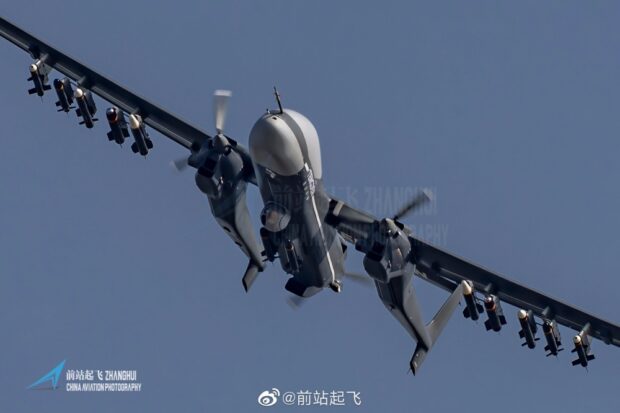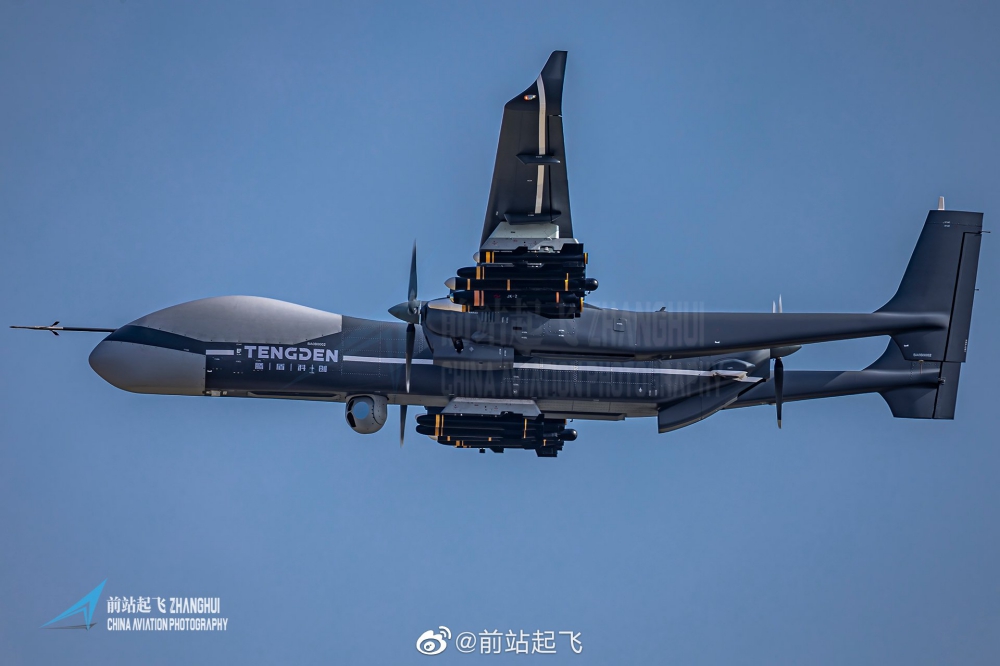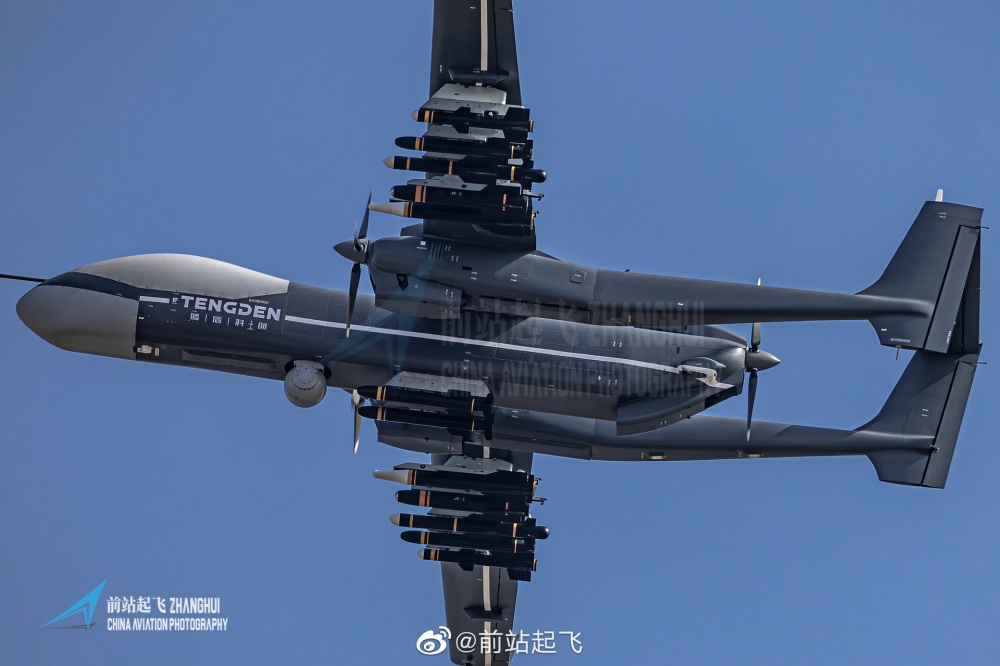China’s Tengoen TB-001 drone was photographed recently carrying a full load of air-to-ground munitions of missiles and bombs, indicating the force-multiplier effect the Unmanned Combat Aerial Vehicle (UCAV) can have on the battlefield.
The TB-001 is a Medium Altitude Long-Endurance (MALE) drone with three engines, first unveiled in September 2017 and has been in service with the People’s Liberation Army (PLA) since 2021.
China presently has the most extensive and diverse range of drone systems, both stealth, non-stealth, jet-powered and propeller-driven, in the world. The country is preparing fervently for a Taiwan conflict with a possible face-off with the United States (US) military.
The photo of the drone was shared over multiple social media and Twitter accounts, which showed the drone carrying twelve AGM ordnance – five each on each wing and two air-to-surface missiles on launcher racks on the underside.
Bomber Drone
The TB-001, often known as the ‘twin-tailed scorpion,’ was developed by the Sichuan-based Tengoen Technology. Distinguished by its twin-tail booms and first launched in September 2017, it has a range of about 6,000-8,000 kilometers and a maximum flight time of 35 hours.
It has a maximum take-off weight (MTOW) of over 3,000 kg and a service ceiling of 32808 feet. It also has an unusually positioned three-propeller configuration, with one on each wing and the other a push-propeller at the end of the main fuselage.
This flight altitude is higher than the effective interception range of the short-range surface-to-air missiles, improving the operational safety of the UCAV.
This design combines the tops of the two vertical tails to create a flat tail by extending two tail support sections backward on the wing, each joining a vertical tail. A flat tail, a vertical tail, and a tail brace together form a structure.
This layout is used on various aircraft, including the well-known P-38 Lightning Fighter during World War II.
With an electro-optical tracking system (EOTS) just ahead of the ventral missile launchers, the drone can come in handy in taking out heavy concentrations of ground targets by acting as a ‘bomb truck.’
Being a non-stealth UCAV with a heavy weapons payload, it cannot be expected to remotely reconnaissance, track and attack targets solely on its own in contested environments, with active enemy long-range surface-to-air missiles, fighters, and UAVs.
Therefore, it qualifies largely as a ‘Reconnaissance Strike’ UAV, providing ground support in situations where enemy airpower and anti-air batteries are either degraded or heavily engaged by friendly forces.
How Could It Be Used?
Combining its own electro-optical tracking system along with other friendly stealth drones, fighter jets, and ground assets, the TB-001 can be called in to release its payload and fly back. Being able to carry the kind of load it does might allow other ground assets to be lightly armed and mobile.
Or they might not need to be either and might be just as heavily armed, with the air support in the form of the TB-001 being just additional firepower.
In other situations, ground forces can destroy air defense from the ground itself, while the TB-001 destroys bunkers, command centers, and armored vehicles that aid in the capture and holding of land territory.
The TB-001 drone can fire the 20 kg AR-2 air-to-ground missiles to destroy light vehicles, enemy personnel on the ground, and other targets. To destroy heavy armored targets and fortifications, Chinese developers have also introduced the 80 kg AR-4 air-to-ground missiles.
The AR-4 has a range of up to 20 kilometers and can be launched from a height of 7000 meters, which is far superior to the Hellfire air-to-ground missile of the United States. AR-4 can use an infrared, TV, or millimeter wave radar, seeker.
The TB-001, therefore, likely holds great utility in a Taiwan operation, attacking land targets. It has already seen operational flights, first flying over the East China Sea unaccompanied and then flying through the Miyako Strait alongside two Shaanxi Y-9 aircraft in August 2021.
On both occasions, it was detected by the Japanese Maritime Self-Defence Force (JMSDF).
Source: Eurasian Times



